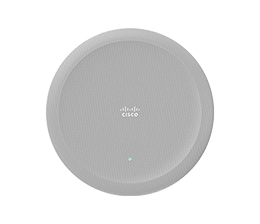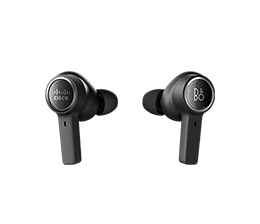Auto dialers: An overview
Contact centers must operate efficiently. Two-thirds of customers say they’re only willing to wait on hold for two minutes, and more critically, 13% of consumers aren’t willing to wait at all. One way that contact centers are responding to increasing consumer demand is by adopting auto dialers.
Auto dialers automate the process of making phone calls to multiple recipients. Their main purpose is to streamline communication efforts, particularly in environments with routinely high call volumes.
By automating the dialing process, auto dialers reduce the time users spend on repetitive tasks, allowing them to focus more on the interaction with the customer or prospect once the phone call is connected.
There are three different types of auto dialers: Preview dialers, power dialers, and predictive dialers.
Preview dialers
A preview dialer provides operators with information about the next phone call in the queue before picking it up. This functionality allows the user a moment to review relevant details about the individual or company they are about to contact, supporting tailored conversations that reflect the caller's specific needs and history.
Preview dialers are utilized when calls require a high level of personalization or in-depth knowledge about the client. For instance, in a financial services firm, advisors use preview dialers to review the client's recent transactions and investment preferences before discussing portfolio adjustments.
Similarly, in healthcare, physicians use preview dialers to check a patient's medical history and prior interactions before making follow-up calls regarding treatment plans or medication adjustments.
Power dialers
Power dialers—or progressive dialers—operate by automatically dialing the next number in the list once the current call has finished, without user intervention to initiate each call. This type of dialer is geared towards maximizing call volume, reducing the wait time between calls to almost zero.
Power dialers are suitable for environments focused on quantity and efficiency, such as straightforward customer outreach campaigns or fundraising drives where detailed personalization of each call is less necessary.
The main advantage of using a power dialer is its ability to maintain a steady flow of calls, ensuring that operators spend more time talking to potential customers and less time navigating through contact lists.
Predictive dialers
Predictive dialers are an advanced form of auto dialer that dial multiple numbers simultaneously. They also use algorithms to predict when a contact center agent will be available to take a call. A predictive dialer adjusts the calling rate based on various factors, including:
The average call duration
The number of available customer support agents
The historical call answer rates
Predictive dialers are particularly effective in large-scale call centers where call handling efficiency can significantly impact overall operational productivity.
They minimize idle time and improve human resource usage by ensuring that a soon-to-be-available agent has a new call ready as soon as they finish with the current one. However, predictive dialers require careful management to avoid issues such as call abandonment, which can occur if the dialer connects more calls than there are available agents.
Ultimately, auto dialers enhance operational efficiencies by automating the dialing process, allowing businesses to allocate human resources more effectively. By selecting the appropriate type of auto dialer—preview, power, or predictive—organizations can tailor their approach to outbound call communications to best fit their specific business needs and customer interaction strategies.
Why do companies adopt auto dialers?
The adoption of auto dialers across sectors is driven by the need to streamline communication processes and improve operational efficiency. These systems are equipped with several features that help manage large volumes of outbound calls effectively:
Integration with business systems
Auto dialers can be integrated with existing business systems—such as customer relationship management (CRM) platforms and enterprise resource planning (ERP) systems—to streamline workflows and enhance data accuracy.
This integration facilitates automatically updating customer contact details and interaction histories each time a call is made. It also helps ensure that all customer interactions are accurately logged, providing sales teams with up-to-date information central to making informed decisions and personalizing future communications.
Furthermore, this integration helps maintain data integrity and reduces the errors commonly associated with manual data entry.
Advanced list filtering capabilities
Auto dialers enhance efficiency by employing sophisticated list-filtering techniques. These systems automatically screen out irrelevant numbers due to factors such as previous unresponsiveness or inclusion in the Do Not Call (DNC) registry.
This filtering process helps organizations adhere to legal standards and regulations while improving the effectiveness of call campaigns by focusing efforts on contacts that are more likely to yield positive outcomes.
Time zone management
For organizations operating in multiple time zones, auto dialers manage calls based on each contact's geographic location. This feature ensures that calls are made during appropriate local times, reducing the risk of calls being made at inconvenient hours and increasing the likelihood of successful engagement.
Operational efficiency and productivity
Auto dialers automate the repetitive task of dialing telephone numbers, allowing customer service agents and sales representatives to dedicate more time to engaging with clients and prospects.
This shift from manual dialing to automated systems increases the volume of calls that can be handled daily and decreases the idle time between calls. As a result, this leads to higher productivity levels and better allocation of human resources.
Enhanced customer engagement
Auto dialers support various features that improve customer engagement. Capabilities like message broadcasting and customized call scripts, for example, allow companies to tailor their messages based on specific preferences or past customer interactions. This level of customization makes communications more relevant and engaging, enhancing customer satisfaction and loyalty.
Predictive insights
Of the three auto dialers we mentioned, a predictive dialer uses algorithms to optimize call timing and manage call loads. They analyze historical call data to predict the optimal times for contacting customers and anticipate when customer support agents will be available to handle new calls.
These insights help businesses optimize their call strategies, improve resource allocation, and increase the overall efficiency of their call operations.
Auto dialer challenges and how businesses overcome them
While auto dialers streamline outbound communication and enhance operational efficiency, they can present several challenges. Businesses overcome these hurdles through strategic planning, technology adaptation, and the implementation of regulatory compliance measures.
1. Regulatory compliance: Auto dialers are subject to a complex web of regulations that vary by country and region—whether the Telephone Consumer Protection Act (TCPA) in the U.S. or GDPR in Europe. Specifically, compliance challenges include avoiding calls to numbers on DNC lists and adhering to time restrictions, among others. Businesses can navigate these regulations by using dialers that are programmed to automatically filter DNC lists and schedule calls within allowed times. They can also incorporate regular updates to compliance measures in their software updates, ensuring that they adjust to legislative changes as they occur.
2. Integration with existing systems: Auto dialers must integrate seamlessly with existing business systems—CRM or analytics tools, specifically—to provide a unified view of customer interactions and data management. Yet, this integration can be technically challenging due to differing software architectures or outdated systems. To help simplify the integration process, businesses can choose auto dialers that offer flexible application programming interfaces (APIs) to facilitate a smooth integration. They may also employ middleware solutions that act as a bridge between different systems to synchronize data across platforms.
3. Preserving personal touch: There’s a risk that using auto dialers may depersonalize customer interactions, which, in turn, can detract from customer experience. To mitigate this, businesses use preview dialers, which allow agents to view customer information before picking up. Additionally, they script dynamic elements into calls that adapt based on the customer's previous interactions and preferences, which are pulled from integrated CRM systems.
4. Ensuring data security: Auto dialers can pose security risks due to the large volumes of personal data they process and store. Businesses can address these concerns by implementing dialers with robust security protocols, such as data encryption, secure access controls, and regular security audits.
5. Optimizing call quality and efficiency: Predictive dialers must balance call efficiency with quality to avoid issues, such as premature call termination or excessive call drops. For quality assurance, businesses adjust dialer algorithms to optimize call timings based on detailed analytics, including average call durations and success rates. They can also conduct continuous monitoring, allowing for real-time adjustments to dialing patterns—thereby maintaining a balance between efficiency and customer satisfaction.
6. Managing data accuracy: The effectiveness of auto dialers largely depends on the accuracy of the data they use—incorrect or outdated information leads to inefficiency and potential customer dissatisfaction. Businesses can ensure data accuracy by implementing data management practices that regularly cleanse and update their databases. More specifically, they can employ automated verification tools that flag discrepancies and prompt manual reviews to maintain high data quality standards.
Integrate auto dialing technology with Webex for enhanced operations
Webex Contact Center allows agents to efficiently manage a higher volume of calls, optimizing customer engagement and operational productivity. Specifically, Webex Contact Center integrates seamlessly with auto dialing systems to provide a unified communication platform that enhances the capabilities of both technologies. This integration helps streamline contact center operations by combining advanced call routing, customer information management, and real-time analytics.
Enhanced agent productivity and collaboration: When integrated with auto dialers, Webex Contact Center allows agents to utilize resources such as real-time customer data access and instant CRM updates. Agents can access comprehensive customer profiles compiled from various data sources within the Webex interface, allowing for more informed and personalized customer interactions.
Real-time data synchronization: The integration ensures that all customer interactions are logged and synchronized across systems in real time. This includes updating customer records and interaction histories in the CRM immediately after each call. Such synchronization not only improves data reliability but also provides agents with up-to-date information, enabling them to offer solutions based on the latest data.
Advanced routing and queue management: With auto dialers handling the initial call connections, Webex Contact Center’s intelligent routing capabilities can then direct calls to the most suitable agents based on skills, availability, and customer needs. This blend of technologies optimizes call distribution, minimizes wait times, and improves the overall efficiency of the contact center operations.
Improved customer experience management: Webex Contact Center leverages analytics to provide insights into customer behaviors and preferences, which can be used to tailor interactions for better engagement. Combined with the efficiency of auto dialers, this leads to faster resolution times, personalized service offerings, and a more satisfying customer experience overall.
By leveraging the strengths of both Webex Contact Center and auto dialers, businesses can create a more dynamic, responsive, and efficient contact center environment that exceeds today’s customer service expectations. Click here to learn more about how Webex Contact Center can help you improve business outcomes and yield customer loyalty.







